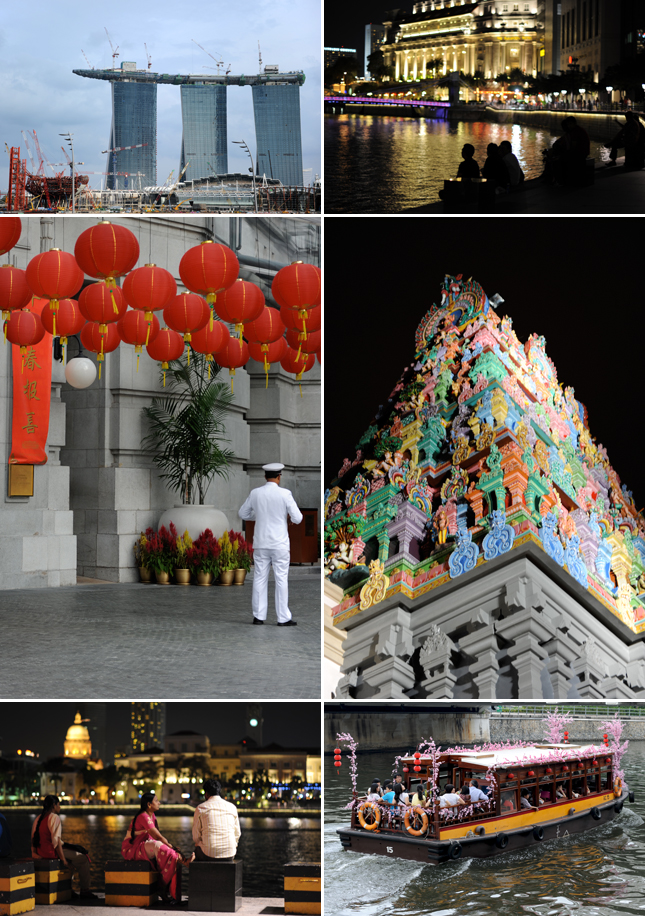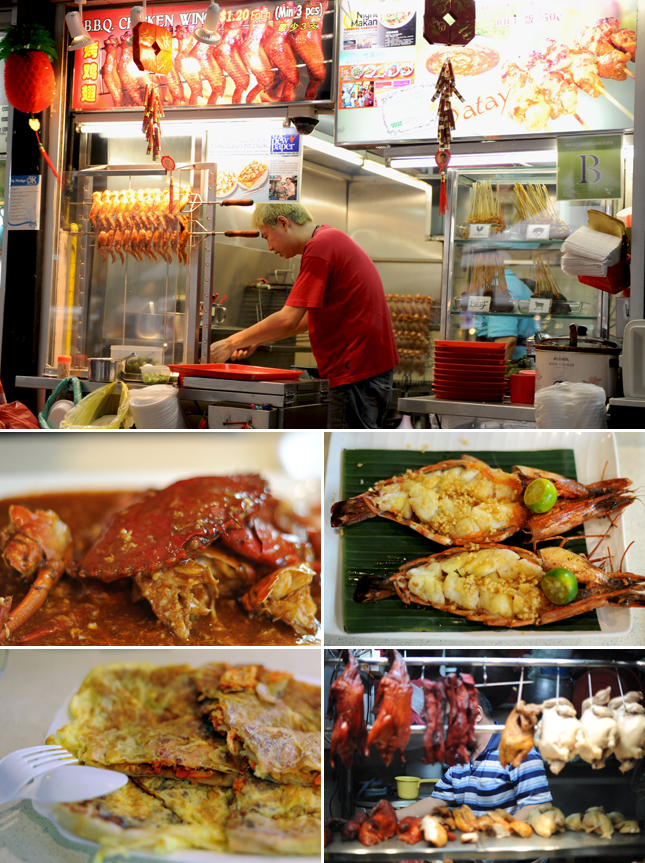
The last of the mobile food hawkers were banished from the streets of Singapore in 1986. Over were the days when the food hawkers of the country were allowed to roam neighborhoods clanging bells or clacking bamboo poles enticing customers to buy their “siew yeh” (supper) from them. It had taken the Singaporean government over 15 years to get the hawkers off the streets and into an enclosed space. The reasons for their being relegated to open-air, urban food courts or hawkers centres had nothing to do with the love of rule-making that Singapore is infamous for and more to do with matters of hygiene. People were getting sick. Some were getting very sick, even fatally so. To combat this the government reorganized a socioeconomic and cultural institution that sprang up after World War II and grew as a result of the rapid urbanization of the 50‘s. Understanding early on that by eradicating the street hawkers the government would be tearing a wide hole in the social fabric, mainly by wiping out a hawker’s income and eliminating one of the few ways a person could purchase a cheap, cooked meal, then leader Lee Kwan Yew, ordered the construction of the outdoor food courts now found throughout the country.
Like everything in Singapore, the planning and location of the new vendor stalls was extremely well thought out. Nearly all were placed in established market areas, public housing centers or near bus and subways interchanges. All were fitted out with running water, sewage lines, public toilets, washing facilities and gas and electricity lines. In terms of improving food safety the move was remarkably effective, reducing the average number of food poisoning incidents linked to hawker stalls to around just four a year.¹ And, in terms of modifying, rather than losing a cultural institution completely, the emergence of the hawkers centres ushered in a new era. Now locals head to the hawker’s food stalls for their makan (literally makan translates as, “to go out for a stroll” but has also come to mean “dine out”) instead of the food hawkers coming to them.
Since the inception of the system the hawkers centres have been watched over by three separate government organizations. The National Environment Agency, the Ministry of Environment & Water Reserve and the Housing & Development Board. This is Singapore after all and why have one oversight committee when three will do? These agencies oversee about 120 public food centers. Each center houses about 150 stalls making for roughly 18,000 individual vendors nationwide. Along with the food courts there are numerous cafés, coffee houses, noodle and soup joints and restaurants across the country offering Singaporeans more dining options than most of their southeast Asian neighbors. A recent count determined that in a nation of 5 million people there is one food vendor for every 570 people.

In a hyper-productive microstate that marches on its stomach people have transformed the act of eating into a form of communication with its own rules. Over the years a hawker centre form of etiquette has emerged. Some food court rules might strike some as rude. For example, when tables are full it is not considered bothersome to linger very near an occupied table and wait for the occupants to finish eating and leave. It is bad form to not hurry up if you occupy a table in a busy hawker centre and you are aware that others are waiting for your place. Another practice some might find bothersome is the art of the “chope.” Definition of chope: verb, from Singlish; to place a package of tissue on a table or chair to signal to others that that place is taken or reserved.
Not all Singaporeans care to perform the hawker stall courtship dance. Many now prefer the indoor food courts that have opened in many of the nation-state’s shiny, new shopping malls. Most of the indoor versions sell many of the country’s signature dishes like kampong chicken, roti prata, chili crab and black pepper crab, nasi padang and the less ordinary plates of gong-gong (periwinkle) and chut-chut (snail), however most of the mall vendors operate as entities of large, national franchises.
Fans of the indoor food courts like the air-conditioned climate, the relative calm of the dining setting, the absence of open flames and smoke and the fact that none of the vendors aggressively approaches and attempts to coerce customers into eating at their stall. Detractors of the indoor food courts dislike them for the same reasons in the inverse.
Not surprisingly there is the new “retro” view as expressed by a local cab driver. “I am third generation here,” the driver explained, “I have been here my whole life and the one thing I miss the most about the old Singapore is the food hawkers who used to come to our neighborhood and sell their food to us right there off the street.”
Like much else in Singapore, the well-intentioned relocation of the food hawkers and the increased regulations that improved the overall safety of food preparation has resulted in an unfortunate byproduct and that is: vigilant oversight has flattened the experience. This difficult to define character, energy, type of élan, je ne sais quois, whatever it is called, has been quietly smothered under a nice yet obnoxious governmental wet blanket. There is no denying that maintaining public safety is a top priority and Singapore is still rightly famous for its food scene and there are vendor/chefs who are masters of their craft. However, the once rough-edged personality and excitement that was part of the makan experience has been polished to a lusterless dull by institutions more interested in soothing the senses rather than igniting them.
1.) In February 2010 there were fatal food poisonings that claimed two victims. The tainted food was traced back to an Indian rojak stand at the Geylang Serai Market. The incident triggered stricter governmental enforcement of hygiene standards. The State Coroner Victor Yeo issued a verdict of “misadventure” regarding the fatalities.